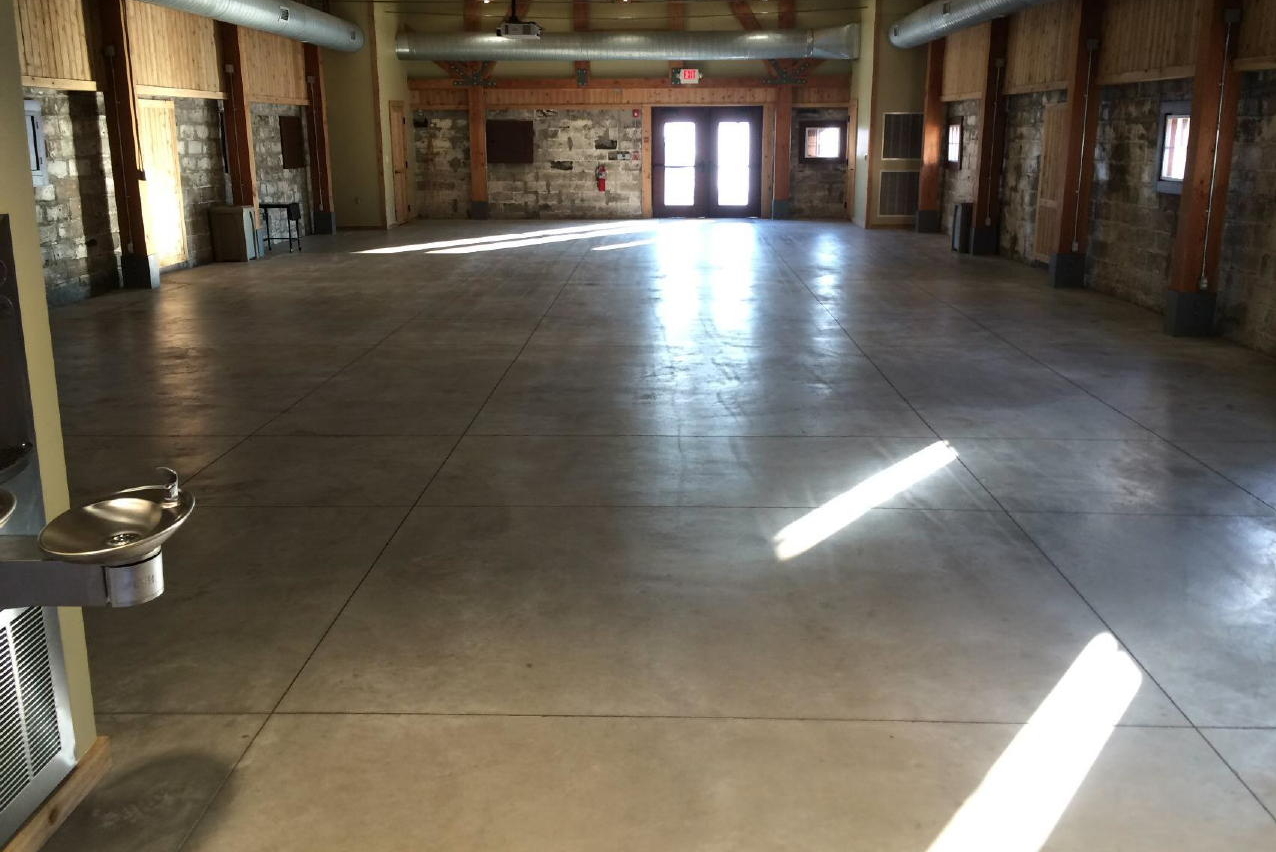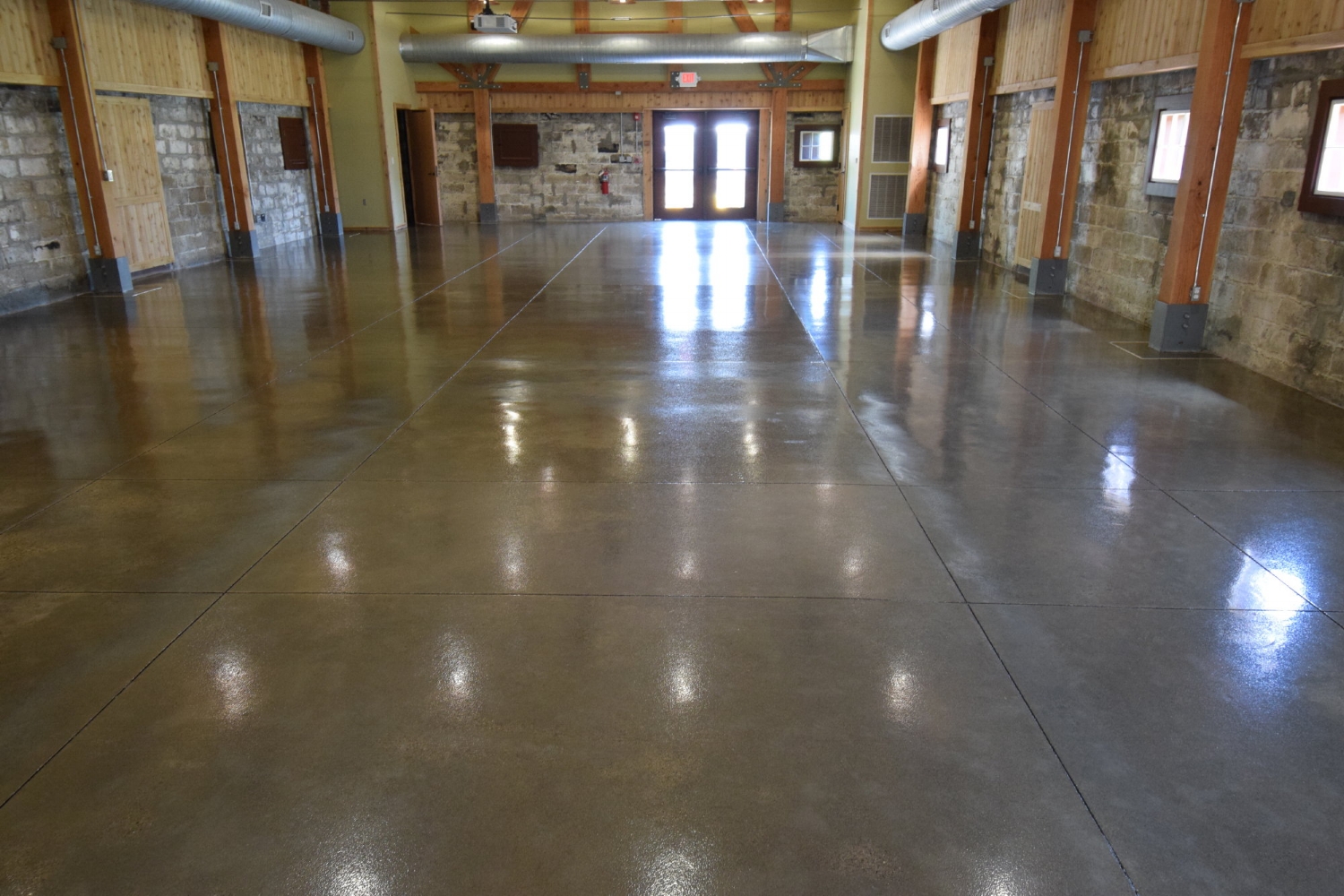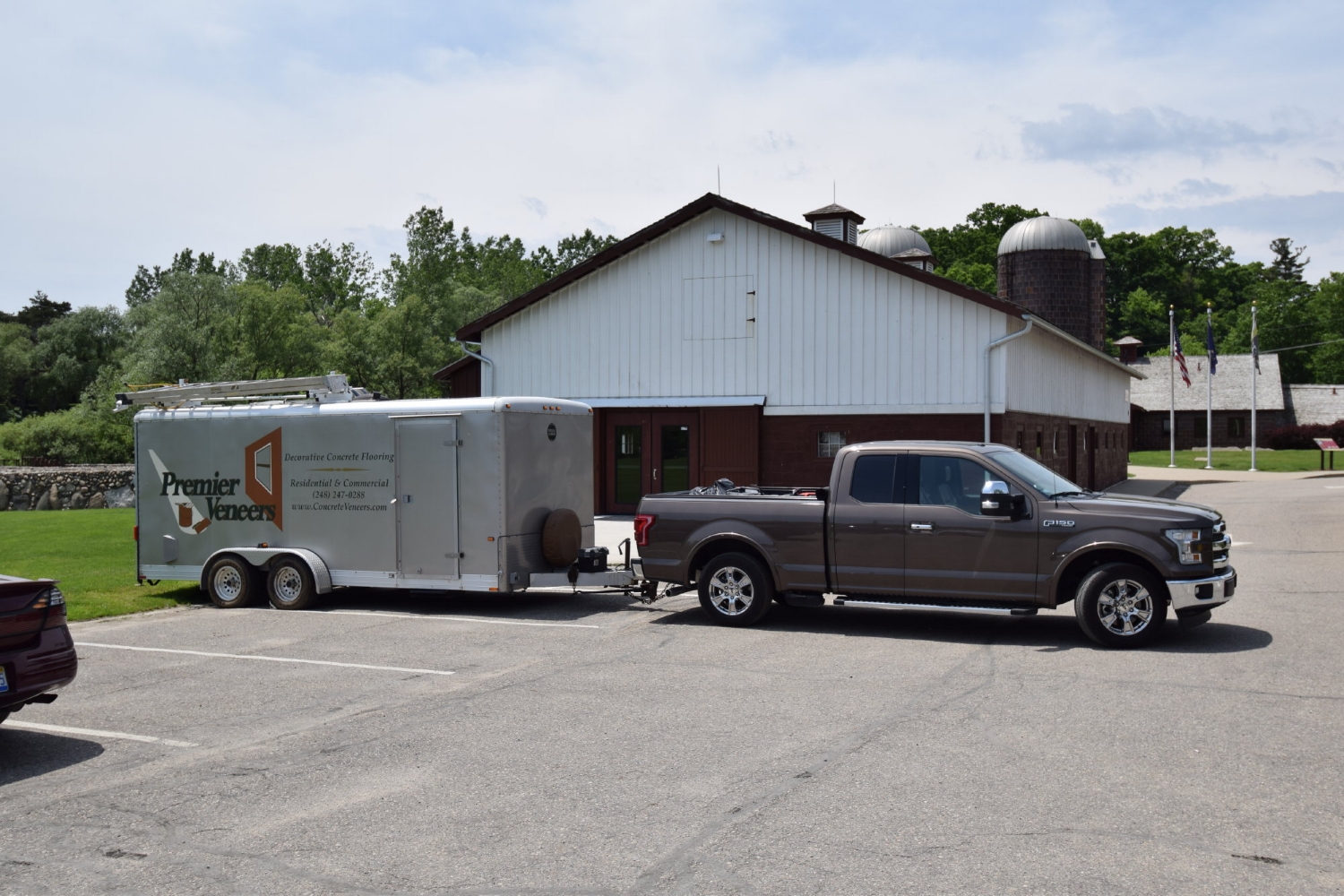Rochester Hills Calf Barn Museum
This is a 3-year-old concrete slab that was never sealed (above left). It was poured when the Calf Barn was renovated in 2014. Since that time, the facility has frequently been used to host wedding receptions. You can see all the resulting stains from food and beverages. The City of Rochester Hills wanted to improve the look of the floor and ease maintenance.
Since it's a historical building, we proposed just grinding and clear sealing the concrete. There was no need to introduce color or a fancy design. It was important just to improve the appearance without altering the interior architectural style of the building by concealing the concrete or by compromising the aesthetic role it plays in the overall design.
In the above six photos, you can see progress on the floor from beginning to end. Notice how increasingly white the concrete becomes as the top layer of stained and discolored cement is ground off. Grinding not only "cleaned" the concrete but opened up the pores so that the sealer would soak in, darken, and beautify the surface of the concrete.
The two photos above show the before and after appearance of the floor facing the other direction. Notice the vastly enhanced luster and depth imparted to the concrete by the sealer. The floor is a darker gray color afterward but not significantly so. Part of the reason it appears darker is there is little ambient light or daylight in the building.
This building is also used to host city meetings. The building was closed shortly after this meeting (above left) was held, for a week and a half, so that we could work on the floor. The two photos above probably show best the transformation that took place with the floor. In the photo above right, you can see how the sealer really brings out the texture of the concrete.
Above left is the exterior of the Calf Barn, with the Dairy Barn in the background. That's our truck and trailer in front of the building. Above right is the entrance to main part of the Van Hoosen Museum, which is in the Dairy Barn.
We always do samples ("mock-ups") at the beginning of a project so that the client knows beforehand what the end appearance of the floor will be. On this project, we used a polyurea sealer from Citadel/Rustoleum. Polyurea is 20x more stronger than epoxy, and its abrasion resistance is greater than that of polished concrete.
We did these samples in one corner of the building and then ground them off when the project began. We did two samples in order to determine which slip-resistant aggregate the client preferred. Polyurea coatings are so dense and so hard that unless a slip-resistant aggregate is mixed in, they become extremely slippery when wet.














